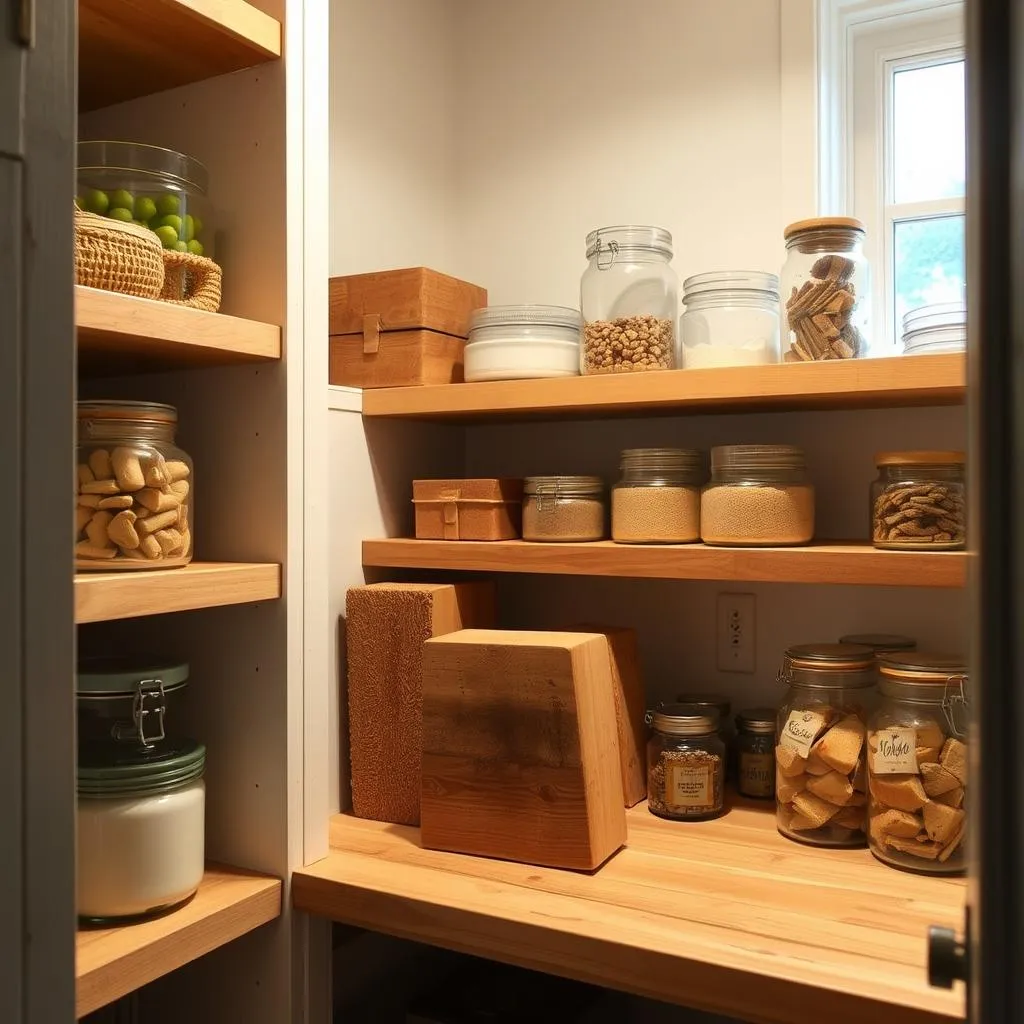Table of Contents
1. Introduction: The Allure of Cedar
2. Understanding Cedar’s Properties
2.1. Natural Insect Repellent
2.2. Absorbing Moisture
2.3. Aromatic Benefits
3. Types of Cedar for Clothes Storage
3.1. Red Cedar vs. White Cedar
3.2. Sourcing Sustainable Cedar
4. Cedar Blocks vs. Other Storage Solutions
4.1. Cedar Blocks vs. Cedar Chests
4.2. Cedar Blocks vs. Mothballs and Other Chemical Repellents
5. Choosing the Right Cedar Blocks
5.1. Size and Quantity Considerations
5.2. Checking for Quality and Certification
6. How to Use Cedar Blocks Effectively
6.1. Placement Strategies in Drawers and Closets
6.2. Maintaining the Effectiveness of Cedar Blocks
7. Cedar Blocks and Different Fabrics
7.1. Suitable Fabrics
7.2. Fabrics to Avoid
8. Addressing Common Concerns
8.1. Cedar Scent Sensitivity
8.2. Potential for Staining
9. Cleaning and Maintaining Cedar Blocks
10. Long-Term Care and Replacement
11. Beyond Clothes: Other Uses for Cedar Blocks
12. The Environmental Impact of Cedar
13. Where to Buy High-Quality Cedar Blocks
14. DIY Cedar Block Projects
15. Conclusion: Embracing the Natural Power of Cedar
16. Frequently Asked Questions (FAQs)
Cedar Blocks for Clothes Storage: A Natural Solution for Fresh-Smelling and Pest-Free Garments
1. Introduction: The Allure of Cedar
For centuries, cedarwood has been prized for its rich aroma and remarkable properties. Beyond its captivating scent, cedar possesses natural insect-repelling qualities and the ability to absorb moisture, making it an ideal choice for protecting your treasured clothing and textiles. In this comprehensive guide, we’ll delve into the world of cedar blocks for clothes storage, exploring their benefits, usage, and how to maximize their effectiveness in preserving your wardrobe.
2. Understanding Cedar’s Properties
The magic of cedar lies in its inherent characteristics. Let’s examine what makes it so special:
2.1. Natural Insect Repellent
Cedar’s potent aroma stems from natural oils that act as a powerful deterrent to moths, silverfish, and other common clothing pests. These oils, specifically thujone, effectively repel insects, preventing them from damaging your clothes. Think of it as nature’s built-in pest control system for your closet!
2.2. Absorbing Moisture
Cedar wood is naturally porous, meaning it can absorb excess moisture from the air. This moisture-absorbing property helps to regulate humidity within your closet or drawers, preventing mildew and mustiness from developing and keeping your clothes fresh and dry. It’s like having a tiny, natural dehumidifier in your storage space.
2.3. Aromatic Benefits
Beyond its practical uses, the fresh, clean scent of cedar is incredibly appealing. This pleasant aroma can impart a refreshing fragrance to your clothes, leaving them smelling wonderfully clean and naturally scented. It’s a subtle, sophisticated scent that elevates the experience of opening your drawers or closet.
3. Types of Cedar for Clothes Storage
Not all cedar is created equal. The two main types used for clothes storage are red cedar and white cedar:
3.1. Red Cedar vs. White Cedar
Red cedar is generally considered more effective as an insect repellent due to its higher concentration of aromatic oils. White cedar is also a good option but may require more blocks to achieve the same level of pest protection.
3.2. Sourcing Sustainable Cedar
When purchasing cedar blocks, always look for sustainably harvested options. This ensures that you’re not contributing to deforestation and that future generations can enjoy the benefits of this valuable resource. Look for certifications that guarantee sustainable forestry practices.
4. Cedar Blocks vs. Other Storage Solutions
Cedar blocks offer several advantages over alternative storage solutions:
4.1. Cedar Blocks vs. Cedar Chests
While cedar chests offer enclosed storage, cedar blocks offer more flexibility, allowing you to customize your placement for optimal protection and scent distribution within drawers and closets.
4.2. Cedar Blocks vs. Mothballs and Other Chemical Repellents
Unlike harsh chemical repellents that can leave a lingering odor and potentially harm your health and clothing, cedar blocks offer a natural, safe, and eco-friendly alternative.
5. Choosing the Right Cedar Blocks
Selecting the right cedar blocks involves considering several factors:
5.1. Size and Quantity Considerations
The number of blocks you’ll need depends on the size of your closet or drawers. Larger spaces will require more blocks for effective coverage. Consider using several smaller blocks rather than one or two large ones for better distribution of scent and moisture absorption.
5.2. Checking for Quality and Certification
Look for blocks that are made from high-quality, untreated cedar. Avoid blocks that are treated with chemicals, as these can negate the natural benefits and may even be harmful to your clothes or your health. Look for certifications from reputable forestry organizations.
6. How to Use Cedar Blocks Effectively
Optimal placement is key to maximizing the effectiveness of your cedar blocks:
6.1. Placement Strategies in Drawers and Closets
Distribute the blocks evenly throughout your drawers and closets, ensuring that they are placed amongst your clothes rather than concentrated in one area. This allows for better airflow and even distribution of the cedar scent. 
6.2. Maintaining the Effectiveness of Cedar Blocks
The effectiveness of cedar blocks can diminish over time as the oils naturally evaporate. To prolong their life, occasionally refresh them by lightly sanding the surface, exposing fresh wood and releasing more of the protective oils.
7. Cedar Blocks and Different Fabrics
Not all fabrics react the same way to cedar:
7.1. Suitable Fabrics
Cedar blocks are generally safe for most natural fabrics like cotton, linen, wool, and silk.
7.2. Fabrics to Avoid
While rare, some delicate or synthetic fabrics might be susceptible to staining or discoloration from cedar oils. It’s always advisable to test a small, inconspicuous area before placing cedar blocks directly among these fabrics.
8. Addressing Common Concerns
Let’s tackle some frequently asked questions:
8.1. Cedar Scent Sensitivity
While most people find the scent of cedar pleasant, some individuals may have sensitivities. If you find the aroma overwhelming, start with fewer blocks and allow yourself time to adjust. You can always increase the number of blocks as needed.
8.2. Potential for Staining
Cedar oil can potentially stain certain fabrics, particularly lighter-colored materials. Always test a small area before placing cedar blocks directly against your clothes. Choosing untreated cedar minimizes this risk.
9. Cleaning and Maintaining Cedar Blocks
Cedar blocks require minimal maintenance. If they become dusty, simply wipe them gently with a dry cloth. Avoid using water or harsh chemicals, which can damage the wood and diminish its effectiveness.
10. Long-Term Care and Replacement
Cedar blocks typically last for several years, but their effectiveness gradually decreases. You’ll notice a weakening of the scent. Once the scent noticeably fades, it’s time to replace them.
11. Beyond Clothes: Other Uses for Cedar Blocks
Cedar blocks aren’t just for clothes storage! They can also be used in various areas of your home to repel insects and freshen the air, such as in shoe closets, pantries, and even pet bedding areas. 
12. The Environmental Impact of Cedar
Choosing sustainably harvested cedar blocks is crucial for minimizing the environmental impact. Look for certifications that guarantee responsible forestry practices and support companies committed to environmental sustainability.
13. Where to Buy High-Quality Cedar Blocks
High-quality cedar blocks can be purchased online or at specialty home goods stores. Look for reputable retailers who provide information about the source of their cedarwood.
14. DIY Cedar Block Projects
You can even get crafty! With a little creativity, you can use cedar blocks to create unique and aromatic DIY projects, such as sachets or decorative elements for your home.
15. Conclusion: Embracing the Natural Power of Cedar
Cedar blocks are a remarkable and environmentally friendly solution for protecting your clothing and keeping your storage areas fresh and pest-free. By understanding their properties and using them effectively, you can enjoy the many benefits of this natural wonder for years to come. So, embrace the power of cedar and say goodbye to moth-eaten clothes and musty closets!
16. Frequently Asked Questions (FAQs)
Q1: Are cedar blocks safe for all types of clothing? A: While generally safe for natural fibers, it’s always advisable to test a small, inconspicuous area of delicate or synthetic fabrics before extensive use.
Q2: How often should I replace my cedar blocks? A: Replace them when the scent noticeably fades, typically after a few years.
Q3: Can cedar blocks stain my clothes? A: The possibility of staining exists, particularly with lighter-colored clothes. Always test a small area first. Untreated cedar minimizes this risk.
Q4: Do cedar blocks really work to repel moths? A: Yes, the aromatic oils in cedar effectively deter moths and other common clothing pests.
Q5: Where can I find sustainably harvested cedar blocks? A: Look for reputable retailers that specify the source of their cedarwood and ideally have certifications indicating sustainable forestry practices.






